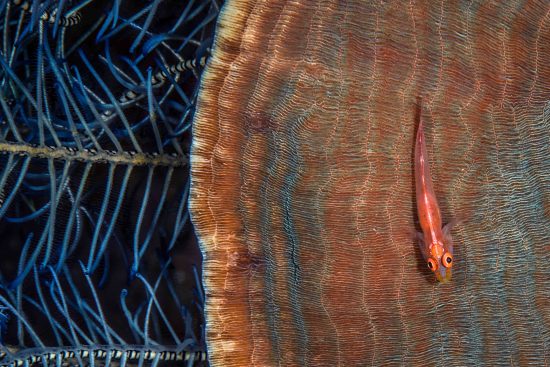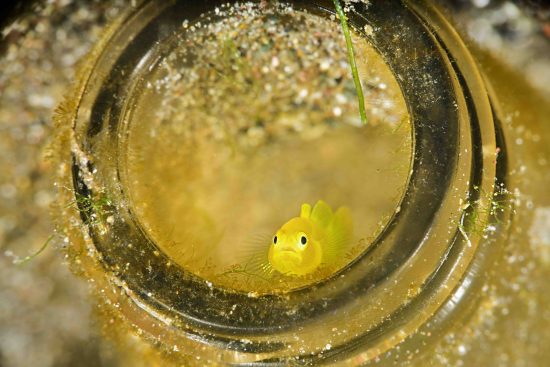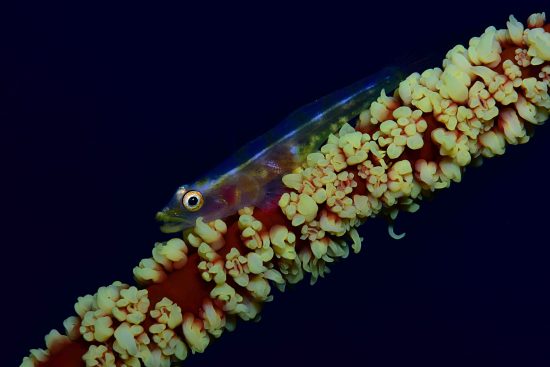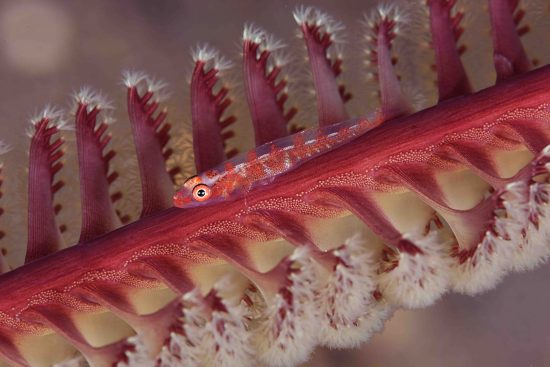






There are more than 2000 species of gobies in one of the largest bony fish family, Gobiidae. They can be found worldwide in tropical and temperate shallow marine, brackish and fresh waters. These fish can usually be located near the bottom, where they attach to the substrate, vegetation, rocks or coral.
Most gobies are small, up to 10cm, including some tiny ones which are less than 1cm long. Very few can grow up to 30cm. It is easy to distinguish a goby from another fish as they have a disc-shaped sucker, the remains of pelvic fins that have fused together. That’s how they stick to rocks and corals so well. Some goby species, such as tadpoles, monkeys and bighead gobies, have no swim bladder.
Gobies usually reach adulthood in a few months when living in warm water, but it can take up to two years in colder waters. Their lifespan ranges from 1-10 years, depending on the environment, with species living longer in warm waters.
Most gobies feed on planktonic algae and invertebrates, but many species like to consume other fish eggs. Only the bigger species of gobies will try to eat other fish.
The love life of gobies is not simple, especially for the males. They tend to find a partner, stick with them, and make themselves a burrow for shelter and spawning. They move dead coral and algae using their mouths and make a fabulous structure with a mound at the front. They fan the sand away to prevent sand accumulation, and the water coming in fast through the opening over the mound helps bring in the oxygen needed for egg development.
The females prefer larger males, so some smaller males who look like females use ”kleptogamy” to reproduce. As they look like females, the male looking after the burrow and the eggs doesn’t recognise them as a threat. These males wait for the paired females to lay their eggs and sneak in and fertilise them. The paired male usually attacks the other male, but as it is usually too late, he has no choice but to release his sperm and care for the eggs, though he is unsure if the offspring is his.
The males guard the fertilised eggs and keep the nest clean and aerated, while the female looks after and maintains the burrow. After a few days, the eggs hatch into transparent larvae and only get their colours once they settle into a new permanent habitat. The freshwater species can be carried into brackish water and even the sea, but migrate back to the river weeks or months later.
Some Gobies can change sex, mostly changing from female to male. This usually happens in other fish, such as wrasse when the dominant male dies, and reproduction is impossible. Only one species of gobies, Gobidon histrio, can change from male to female and back to male again.
They are an important food source for most bigger fish, such as haddock, cod, seabass and flatfish, but many species, such as the Round goby, became invasive when they moved from their native habitats into new unexplored territories. Even though they are small, they are ferocious egg eaters. They can prevent whole populations of other bigger native fish species from reproducing, causing serious damage to ecosystems.
Written by Bogna Griffin, Freshwater and Marine Biologist
Photos by Ivana OK.
 Ivana and Janez
Ivana and Janez 15th April 2024
15th April 2024